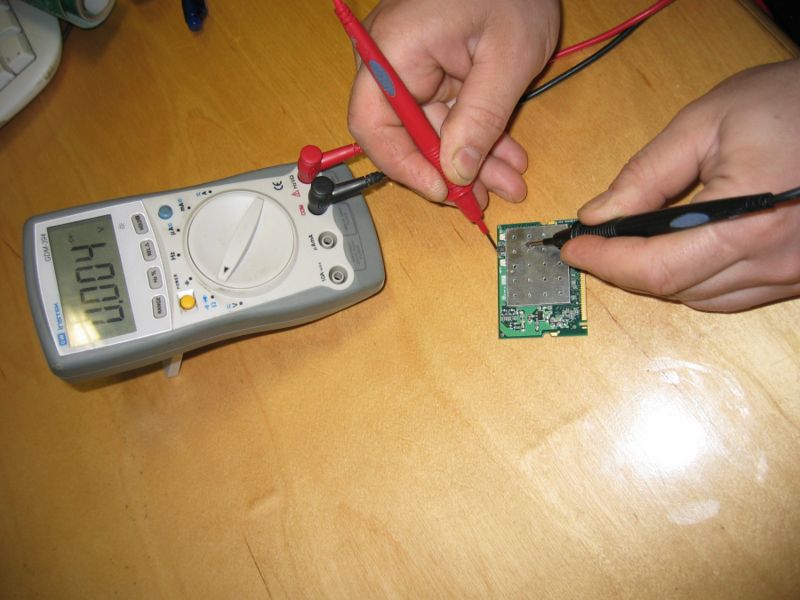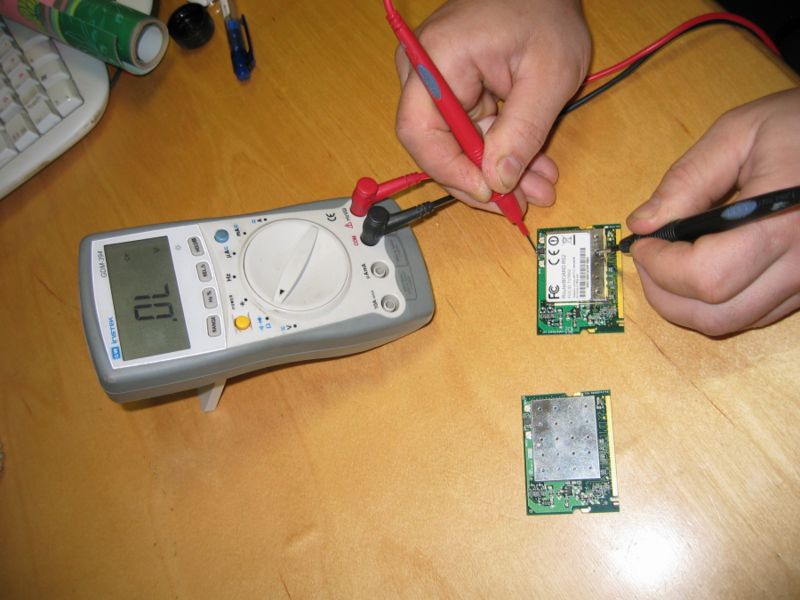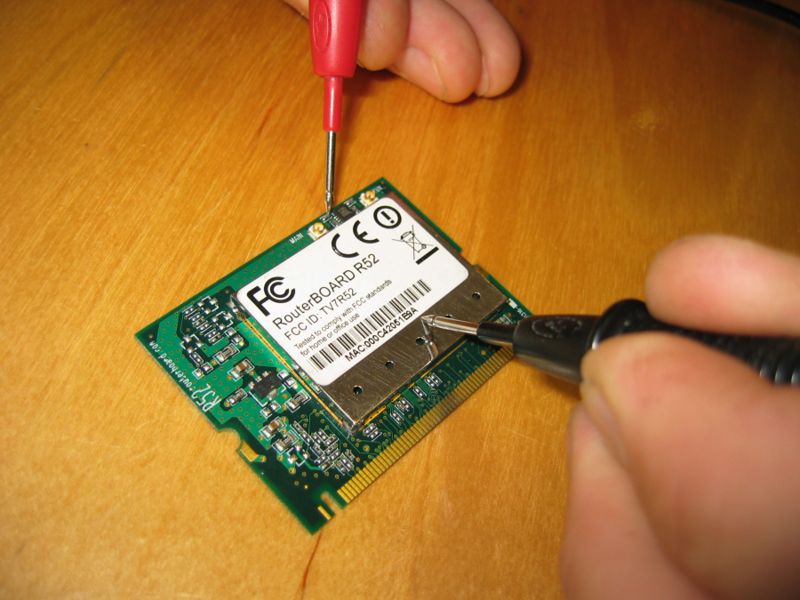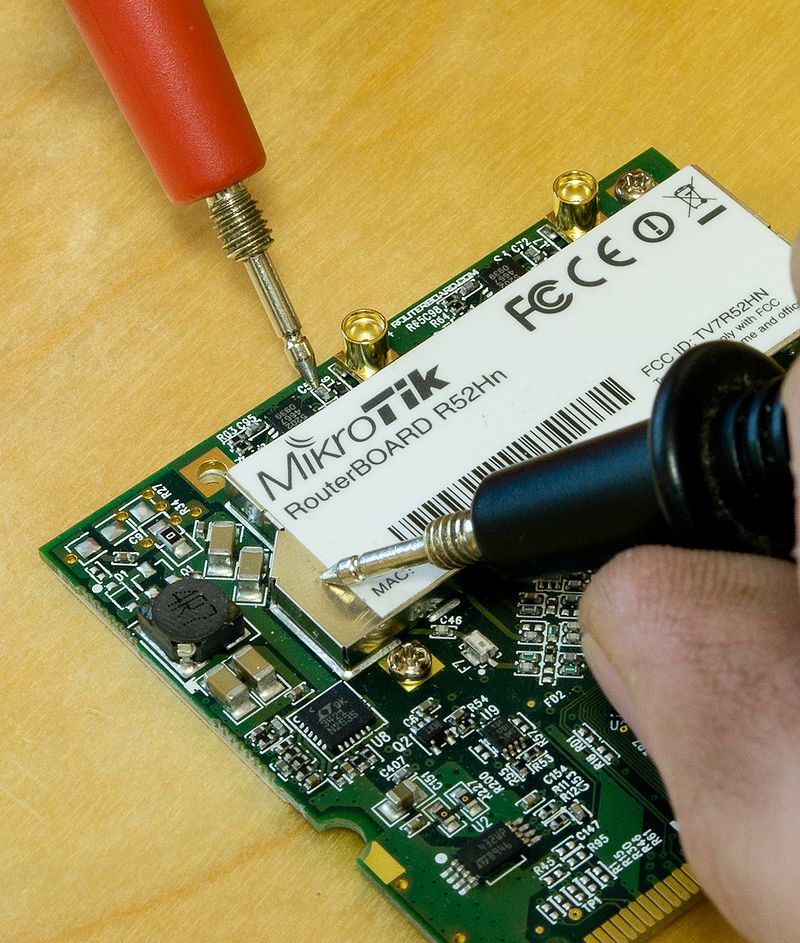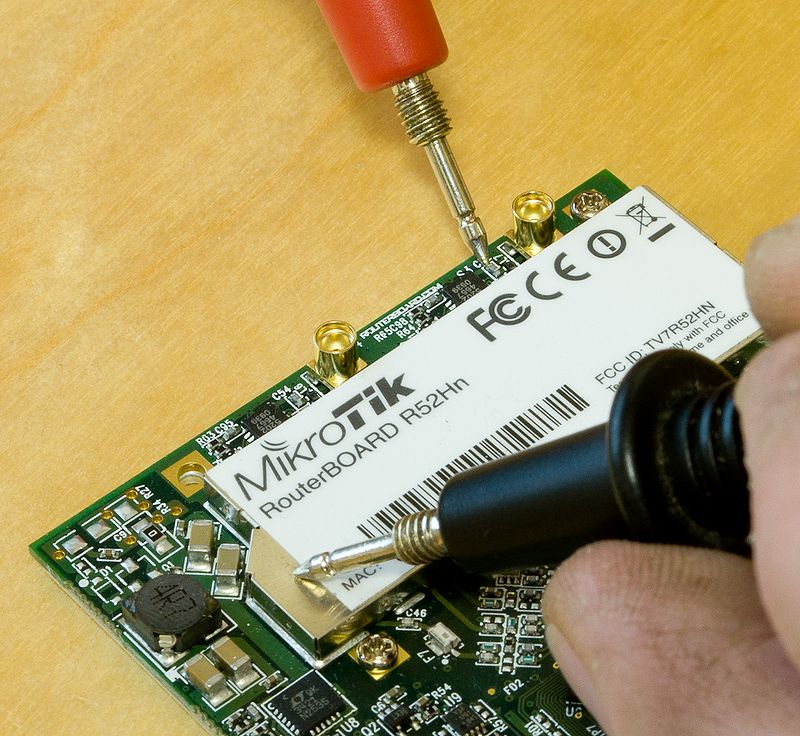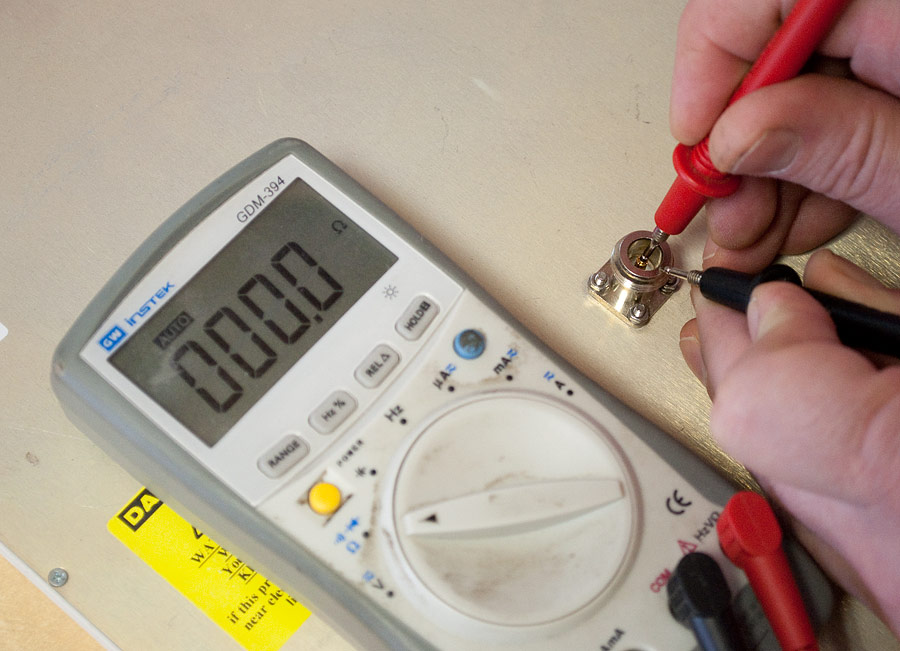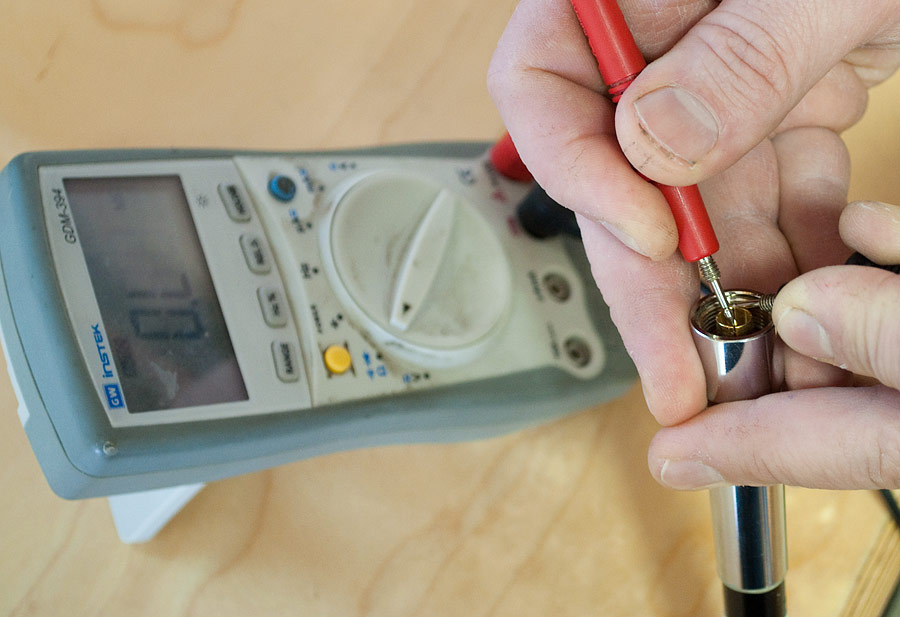Manual:Wireless card diagnostics: Difference between revisions
No edit summary |
No edit summary |
||
| Line 1: | Line 1: | ||
== R52 and R52H | == R52, R52Hn and R52H Power Amplifier damage == | ||
If the cards are becoming too hot to touch, when inserted in a RouterBOARD, but are disabled - the PA might be damaged. This could be caused by user, or by manufacturing problem. To determine, must return to RMA for close inspection. | |||
== R52, R52Hn and R52H ESD damage == | |||
Improper grounding can cause ESD damage to wireless cards during storms or other ESD situations. To test if your R52 or R52H card is malfunctioning due to lightning/storm electrostatic damage, use a multimeter. In case the test fails with this method, the warranty doesn't cover it: | |||
Damaged card: | Damaged card: | ||
[[File:Storm1.jpg|800px]] | [[File:Storm1.jpg|800px]] | ||
Normal card: | Normal card: | ||
| Line 25: | Line 26: | ||
[[File:DSC0633.jpg|800px]] | [[File:DSC0633.jpg|800px]] | ||
== DC shorted antennas == | == DC shorted antennas == | ||
Revision as of 12:06, 29 October 2010
R52, R52Hn and R52H Power Amplifier damage
If the cards are becoming too hot to touch, when inserted in a RouterBOARD, but are disabled - the PA might be damaged. This could be caused by user, or by manufacturing problem. To determine, must return to RMA for close inspection.
R52, R52Hn and R52H ESD damage
Improper grounding can cause ESD damage to wireless cards during storms or other ESD situations. To test if your R52 or R52H card is malfunctioning due to lightning/storm electrostatic damage, use a multimeter. In case the test fails with this method, the warranty doesn't cover it:
Damaged card:
Normal card:
Testing area close-up:
R52Hn card chain 0:
R52Hn chain 1:
DC shorted antennas
Also make sure that your antenna is DC shorted:
DC shorted antenna. This antenna doesn't need a Coax lightning arrestor:
NOT DC shorted antenna. This antenna needs a Coax lightning arrestor to avoid sudden wireless card damage. Note the OL (Overload) in the multimeter:
